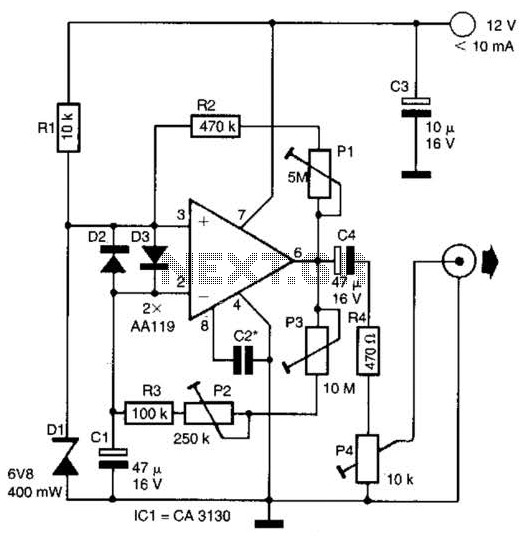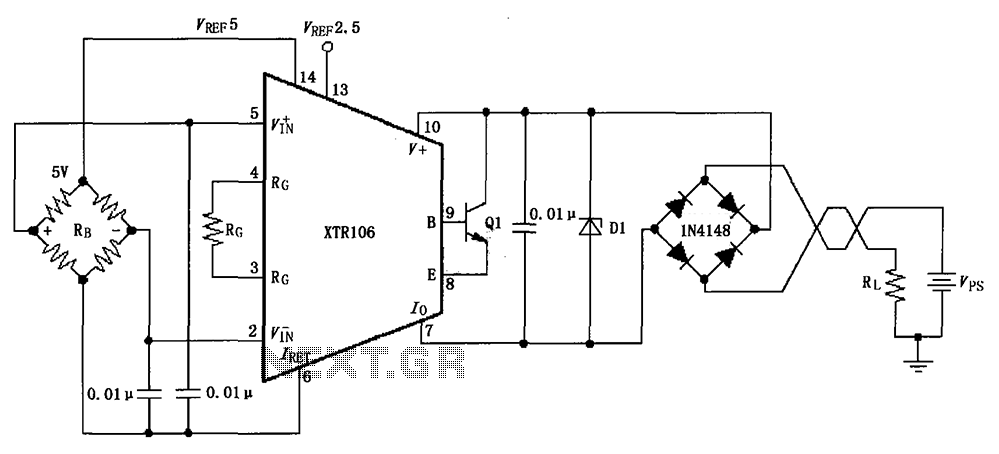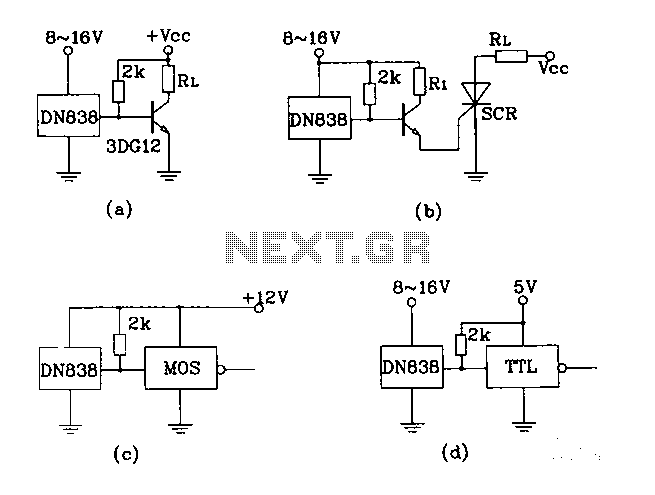
Noise Generator Circuit

This circuit generates noise pulses suitable for test purposes. A Zener diode serves as the noise source. IC1 functions as a relaxation oscillator. P1 determines the noise bandwidth, while P2 and P3 control the noise amplification. The current consumption is 10 mA at 12 V DC.
The circuit operates by utilizing a Zener diode, which generates noise due to its reverse breakdown characteristics. This noise is then fed into a relaxation oscillator, represented by IC1, which converts the noise signal into a series of pulses. The relaxation oscillator typically operates by charging and discharging a capacitor, creating a square wave output that is modulated by the noise signal.
The control potentiometer P1 adjusts the bandwidth of the noise output, allowing for flexibility in the frequency range of the generated noise pulses. This is particularly useful in testing applications where different noise characteristics may be required. The amplification levels of the noise signal are adjusted using potentiometers P2 and P3, enabling fine-tuning of the output amplitude.
The circuit is designed to operate at a supply voltage of 12 V DC, with a current consumption of 10 mA, indicating efficient power usage for generating the noise pulses. This makes the circuit suitable for integration into various testing setups, where controlled noise environments are necessary for evaluating the performance of electronic devices or systems.
Overall, this noise generation circuit provides a reliable method for producing test signals, with adjustable parameters that enhance its versatility in different testing scenarios. This circuit generates noise pulses that are suitable for test purposes, etc. A zener diode is used as a noise source. IC1 is a relaxation oscillator. PI determines noise bandwidth, and P2 and P3 the noise amplification. Current consumption is 10 mA @ 12 Vdc.
The circuit operates by utilizing a Zener diode, which generates noise due to its reverse breakdown characteristics. This noise is then fed into a relaxation oscillator, represented by IC1, which converts the noise signal into a series of pulses. The relaxation oscillator typically operates by charging and discharging a capacitor, creating a square wave output that is modulated by the noise signal.
The control potentiometer P1 adjusts the bandwidth of the noise output, allowing for flexibility in the frequency range of the generated noise pulses. This is particularly useful in testing applications where different noise characteristics may be required. The amplification levels of the noise signal are adjusted using potentiometers P2 and P3, enabling fine-tuning of the output amplitude.
The circuit is designed to operate at a supply voltage of 12 V DC, with a current consumption of 10 mA, indicating efficient power usage for generating the noise pulses. This makes the circuit suitable for integration into various testing setups, where controlled noise environments are necessary for evaluating the performance of electronic devices or systems.
Overall, this noise generation circuit provides a reliable method for producing test signals, with adjustable parameters that enhance its versatility in different testing scenarios. This circuit generates noise pulses that are suitable for test purposes, etc. A zener diode is used as a noise source. IC1 is a relaxation oscillator. PI determines noise bandwidth, and P2 and P3 the noise amplification. Current consumption is 10 mA @ 12 Vdc.





